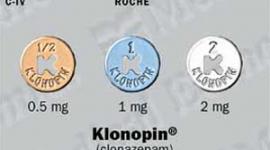Suboxone, Subutex Patient Information Sheet
Find out why Suboxone, Subutex is prescribed, side effects of Suboxone, Suboxone warnings, effects of Suboxone during pregnancy, more - in plain English.
Generic name: Combination of buprenorphine and naloxone
Brand name: Suboxone
Pronounced: SUB-ox-own
Additional Suboxone Patient Information
Full Suboxone Prescribing Information
What is buprenorphine?
Buprenorphine, a derivative of opium, has been marketed in the United States for many years as a pain relief treatment. With the recent FDA approval of buprenorphine for use in the treatment of opioid dependency, buprenorphine is now available as a prescription medication under the brand names of Subutex7 and Suboxone7, both of which are taken sublingually (under the tongue).
How does buprenorphine work?
When taken by a person who is addicted to heroin or another opioid, buprenorphine reduces craving and helps the person remain drug-free. Like methadone, buprenorphine can be used to withdraw from heroin, or it can be used continuously to help keep a person addicted to heroin from using the drug.
What is the difference between Subutex and Suboxone?
The single active ingredient in Subutex is buprenorphine, which decreases the craving for heroin and other opioids. Suboxone is a combination of buprenorphine and naloxone, which both reduces drug craving and induces withdrawal when injected.
How is buprenorphine different from methadone?
Compared with methadone, buprenorphine has a relatively lower risk of abuse, dependence, and side effects, and it has a longer duration of action. Because buprenorphine is a partial opioid agonist, its opioid effects, such as euphoria and respiratory depression, as well as its side effects reach a ceiling of maximum effect, unlike with methadone or heroin. For this reason, buprenorphine may be safer than methadone, as long as it is not combined with sedatives such as tranquilizers or alcohol.
Can a physician in a methadone clinic prescribe or dispense buprenorphine for opioid addiction treatment?
Physicians who have received special certification from Federal and State agencies can prescribe and dispense buprenorphine for opioid addiction treatment in any practice setting, including at a methadone clinic.
How do I find a doctor who prescribes buprenorphine for the treatment of opioid dependence?
Doctors who are qualified to prescribe buprenorphine for the treatment of opioid dependence are listed on the SAMHSA Buprenorphine Physician Locator website: http://buprenorphine.samhsa.gov/bwns_locator/index.html. This listing contains the names, addresses and telephone numbers of qualified physicians.
How does a physician become qualified to use buprenorphine?
Physicians who want to prescribe buprenorphine must complete an 8-hour course or have sufficient experience and qualifications to be certified.
How will buprenorphine be distributed to patients?
Qualified physicians will give patients a prescription for buprenorphine. The patient can then take the prescription to a pharmacy to have it filled. By contrast, methadone can only be distributed at specialized addiction treatment clinics.
What are buprenorphine's side effects?
The side effects of buprenorphine are similar to those of other opioids and may include nausea, vomiting, and constipation. Both buprenorphine and buprenorphine with naloxone can result in the opioid withdrawal syndrome if used by people on high doses of other opioids. Symptoms of opioid withdrawal can include: dysphoria, nausea and vomiting, muscle aches and cramps, sweating, tearing, diarrhea, mild fever, running nose, insomnia, and irritability.
Can buprenorphine be taken while drinking alcohol?
Buprenorphine should not be taken in combination with alcohol. Taking buprenorphine with alcohol increases buprenorphine's respiratory-depressing effects and can be dangerous.
Can buprenorphine be abused?
Because of its opioid effects, buprenorphine can be abused, particularly by individuals who are not physically dependent on opioids. But because its euphoric effects are less than those of other opioids, so is its potential for abuse.
Is buprenorphine safe?
Because of buprenorphine's ceiling effect, an overdose is less likely than with methadone or other opioids. There also is no evidence of organ damage with chronic use of buprenorphine, although some patients experience increases in liver enzymes. Likewise, there is no evidence that buprenorphine causes any significant disruption of cognitive or psychomotor performance. Because information about the use of buprenorphine in pregnant, opioid-dependent women is limited, methadone remains the standard of care for this group.
Additional Suboxone Patient Information
Full Suboxone Prescribing Information
Detailed Info on Signs, Symptoms, Causes, Treatments of Addictions
APA Reference
Staff, H.
(2009, January 4). Suboxone, Subutex Patient Information Sheet, HealthyPlace. Retrieved
on 2025, April 15 from https://www.healthyplace.com/other-info/psychiatric-medications/suboxone-subutex-patient-information-sheet
